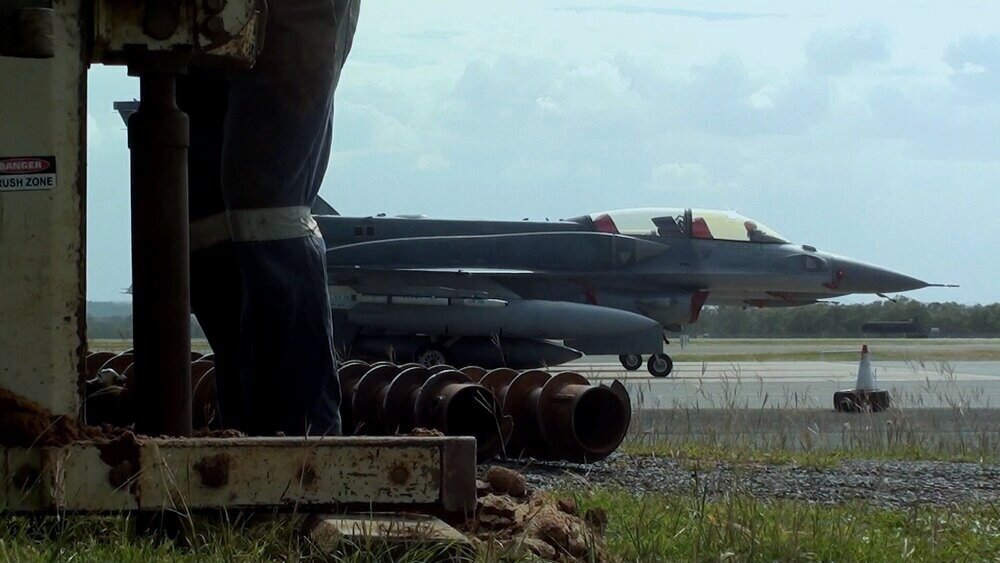MEMBRANE-INTERFACE & HYDRAULIC PROFILING TOOL (MiHPT)
THE BEST OF BOTH WORLDS
The MiHPT system combines in only one probe two of the most popular direct sensing tools used for the investigation of contaminated sites: the Membrane-Interface Probe (MIP) for delineation of volatile organic compounds (VOCs) and the Hydraulic Profiling Tool (HPT) for hydrostratigraphic characterisation, including the determination of preferential migration pathways, low-permeability zones, and hydraulic conductivity values.
Thus, MiHPT enables simultaneous logging of contaminant and hydrogeological properties helping to elucidate the strong interaction between geological features and contaminant fate and transport. The information obtained is particularly valuable for remedial design characterisation purposes, revealing the optimal target treatment intervals for the cost-effective and sustainable application of in-situ remediation technologies such as In-Situ Chemical Oxidation (ISCO) and activated carbon injection with BOS 200.
The application of MiHPT typically leads to significant cost savings in the investigation phase itself thanks to the reduction in the number of laboratory analyses, the number of field campaigns required to ‘fill gaps’, and the minimal investigation-derived waste (IDW).
MAJOR BENEFITS
MIP and HPT logging are mature techniques that have been successfully applied in thousands of sites worldwide.
Simultaneous advancement of MIP and HPT sensors eliminates correlation artefacts between both methods due to fine-scale heterogeneity.
Real-time data visualisation capabilities allowing for adaptive field plans and reduced project durations.
Enhanced insight obtained by collating multiple logs in cross sections and creating 3D models.
Typical MiHPT production is 30–70 m/day.
MiHPT guides and complements the application of more costly characterisation and remediation methods, thus leading to cost-effective and sustainable solutions.
Minimal investigation-derived waste (IDW).
Legion Drilling are pioneers delivering High-Resolution Site Characterisation (HRSC) services in Australia with almost 10 years of experience. Geoprobe rigs are mobilised from our locations in Brisbane, Sydney and Townsville.
Direct sensing tools such as MiHPT provide the site characterisation professional with information to build a conceptual site model at unprecedented speed, detail, and efficiency. Traditional soil and groundwater sampling techniques simply cannot compete with MiHPT’s production rates or density of data.
MIP GC 2000
HIGH-RESOLUTION DELINEATION OF VOCs WITH THE MEMBRANE-INTERFACE PROBE (MIP)
The MIP probe includes a heating block, which is heated to 100–120 °C to induce volatilisation of VOCs found in the formation. Thus, VOCs can move across a semi-permeable membrane into the probe and be transported through the trunkline with nitrogen as an inert carrier gas. The trunkline is attached to a Gas Chromatograph (GC) located up hole. The GC unit is combined with several detectors to discriminate between different contaminants.
The three most common detectors installed in MIP systems are:
Photoionisation Detector (PID) for aromatic hydrocarbons and double-bonded chlorinated compounds among other contaminants of concern.
Flame Ionisation Detector (FID), for any VOCs (including alkanes such as methane), although its sensitivity is relatively low.
Halogen Specific Detector (XSD), which relies on oxidative chemistry and detects halogenated compounds only.
If the chemical detectors are disconnected, vertical profiles of temperature can be obtained for the investigation of biodegradation and natural source zone depletion (NSZD) phenomena.
GROUNDWATER INVESTIGATIONS WITH THE HYDRAULIC PROFILING TOOL (HPT)
The HPT system is used for hydrostratigraphic characterisation purposes, including identification of preferential flow paths, detection of confining layers, and estimation of water-saturated hydraulic conductivity values.
It is also useful for the detection of high electrical conductivity fluids (brines originated from oilfield production or storage activities, landfill leachates, road salts, remediation fluids, and so on).
The HPT system comprises two tools:
an electrical conductivity (EC) dipole, and
a continuous, direct-push injection logging system.
As the HPT probe advances into the subsurface, water is injected through a screen port at a monitored flow rate (generally 200–300 mL/min). The pressure resulting from injecting water at this rate into the medium is logged with an in-line sensor. The completion of HPT reference tests and dissipation tests allows correction of atmospheric and hydrostatic pressure effects at every logging location.
The ratio between flow rate and injection-induced pressure (Q/Pinj) can be used as a proxy of hydraulic conductivity under certain conditions.
INTERPRETATION OF HPT LOGS
In general:
LOW flow rate and HIGH injection-induced pressure correspond to less permeable materials;
HIGH flow rate and LOW injection-induced pressure correspond to more permeable materials;
High EC values may be a sign of fine-textured materials, particularly clay-rich sediments (typically over 50 mS/m).
Therefore, Q/Pinj and EC profiles frequently exhibit opposite trends.
Nevertheless, there are exceptions to this rule:
Clays such as kaolinite have a lower cation-exchange capacity than smectite and montmorillonite and may be more difficult to detect through EC logging;
Fine sands, silts and cemented materials may significantly increase Q/Pinj but not EC;
The presence of chloride ions or remediation amendments may affect EC but not Q/Pinj;
The transition between saturated and unsaturated zones may induce a step increase in EC, especially in coarse-textured materials due to the abrupt change in moisture content;
In sites contaminated with weathered petroleum hydrocarbons, high EC values may reflect LNAPL presence due to microbial activity and chemical alteration of the pore solution.
TECHNICAL WEBINAR ON MiHPT
Dan Pipp from Geoprobe presented this technical session in March 2021. It is part of our series of webinars on advanced site characterisation and remediation.
FAQs
What contaminants can be detected with MiHPT?
Any volatile organic compounds (VOCs), including petroleum hydrocarbons such as BTEX and chlorinated compounds such as trichloroethylene.
MiHPT is also useful for the detection of high electrical conductivity fluids (brines originated from oilfield production or storage activities, landfill leachates, road salts, remediation fluids, and so on).
What subsurface conditions are favourable for the application of MiHPT?
Any subsurface setting suitable for direct push drilling can be investigated with MiHPT. The maximum investigation depth is approximately 30 m below ground surface.
If required, Legion Drilling provides concrete coring as well as alternative investigation approaches for fractured bedrock.
Can MiHPT be used to delineate source zones?
MIP is designed to delineate VOCs in the aqueous, solid, and gas phases. Nevertheless, adjusting the MIP setup may enable investigation of DNAPL source zones without saturating the MIP system.
In the case of petroleum LNAPL source zones, we suggest the application of the Ultra-Violet Optical Screening Tool (UVOST).
Furthermore, we have an arsenal of drilling and sampling equipment for collection of soil, groundwater, and vapour samples as well as installation of wells for monitoring and remediation purposes.
Can MiHPT be used to investigate landfill impacted sites?
MiHPT can estimate multiple parameters of interest for the assessment of landfill impacts, since it incorporates the following sensors:
A continuous injection logging system (HPT) for hydrostratigraphic characterisation.
The HPT helps to determine preferential migration pathways, low-permeability zones, and water-saturated hydraulic conductivity values.
An electrical conductivity (EC) dipole for hydrostratigraphic characterisation and detection of brines and leachates.
This sensor can be used to measure the groundwater specific conductance and detect landfill leachates. High EC values may also reflect the presence of certain clays (smectite, montmorillonite), so this log should be interpreted along with HPT measurements to potentially differentiate between leachates and clays.
Three chemical detectors (PID, FID, and XSD) attached to a gas chromatography unit for delineation of volatile organic compounds (VOCs).
Methane would cause a positive response in the FID log, while the PID and XSD signals would remain stable.
A thermocouple for temperature logging.
If the chemical detectors are disconnected, the system could collect profiles of temperature potentially indicating aerobic and anaerobic activity.
What are the key points to keep in mind to successfully conduct a HRSC campaign?
Be ready to adapt and optimise your field plan as you receive direct sensing data. Our direct sensing technicians will be available to discuss any project-specific details prior to the field campaign and can assist you interpreting logs in real time.
We will carry not just a MiHPT probe but also an Ultra-Violet Optical Screening Tool (UVOST) for precise delineation of petroleum LNAPL source zones. Thus, for the same cost you can combine the application of both tools according to your project objectives.
An elevation survey should be conducted to enable comparison between multiple logs and proper interpretation of cross sections and 3D models.
MiHPT can be used to estimate the depth to the potentiometric surface after conducting a dissipation test. We encourage you to measure in-well fluid levels in adjacent locations immediately prior to the HRSC works to corroborate the results and interpret the logs with less uncertainties.
An HRSC campaign will give you a detailed snapshot of your contaminated site. Understand the site dynamics to put it into context and confidently move your site forward to remediation and/or closure.
And don’t forget to locate all the subsurface infrastructure and utility lines prior to any drilling works!
Where can I find more information?
Please, contact our Direct Sensing Manager (jonas.garciarincon@legiondrilling.com.au) if you want to receive further information or discuss in detail any specific project requirements.
In the meantime, we recommend you to consult the following documents:
Borden, R. C., Cha, K. Y., & Liu, G. (2020). A physically based approach for estimating hydraulic conductivity from HPT pressure and flowrate. Groundwater.
ITRC (2019). Implementing advanced site characterization tools. ASCT-1. Washington, D.C.: Interstate Technology & Regulatory Council, Advanced Site Characterization Tools Team. https://asct-1.itrcweb.org
Liu, G., Borden, R. C., & Butler Jr, J. J. (2019). Simulation assessment of direct push injection logging for high‐resolution aquifer characterization. Groundwater, 57(4), 562-574.
McCall, W., & Christy, T. (2018). Direct Push Logging. Enviro Wiki. https://www.enviro.wiki/index.php?title=Direct_Push_Logging&oldid=11356





